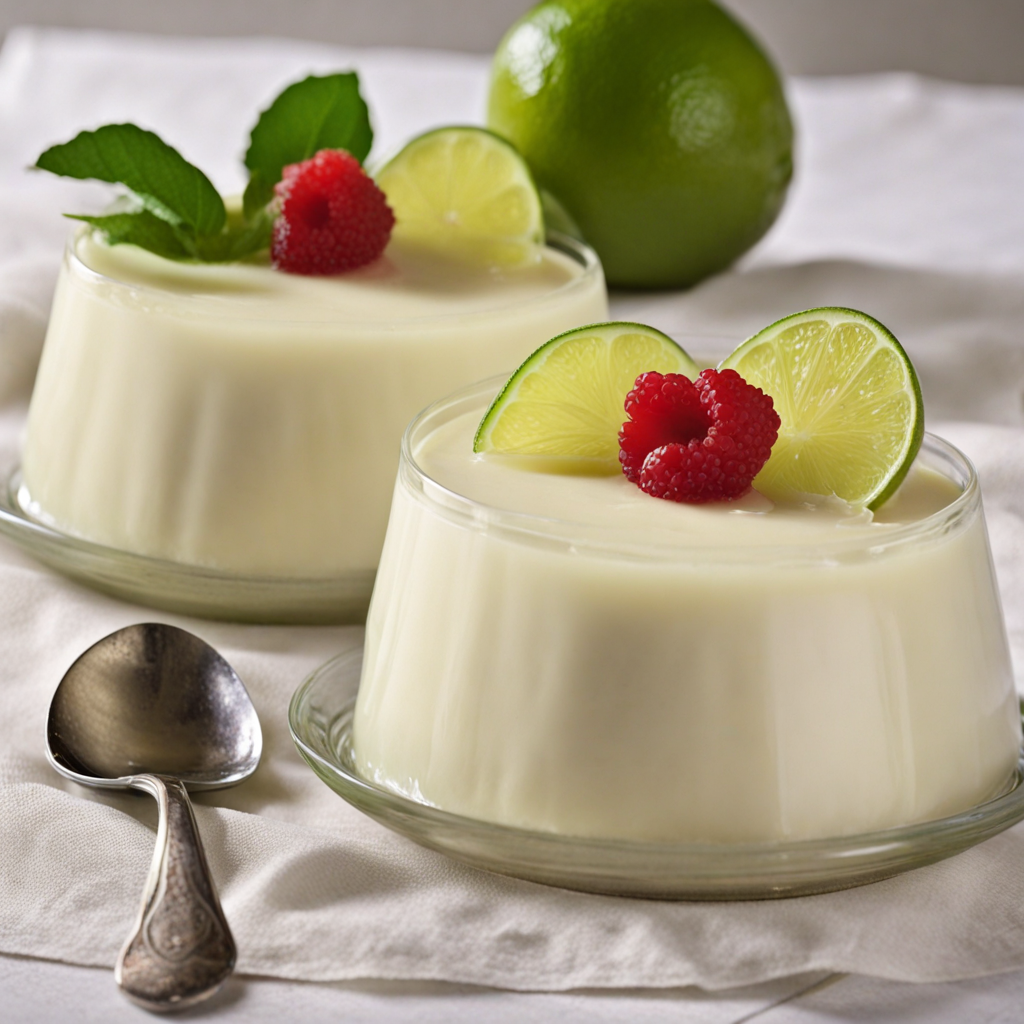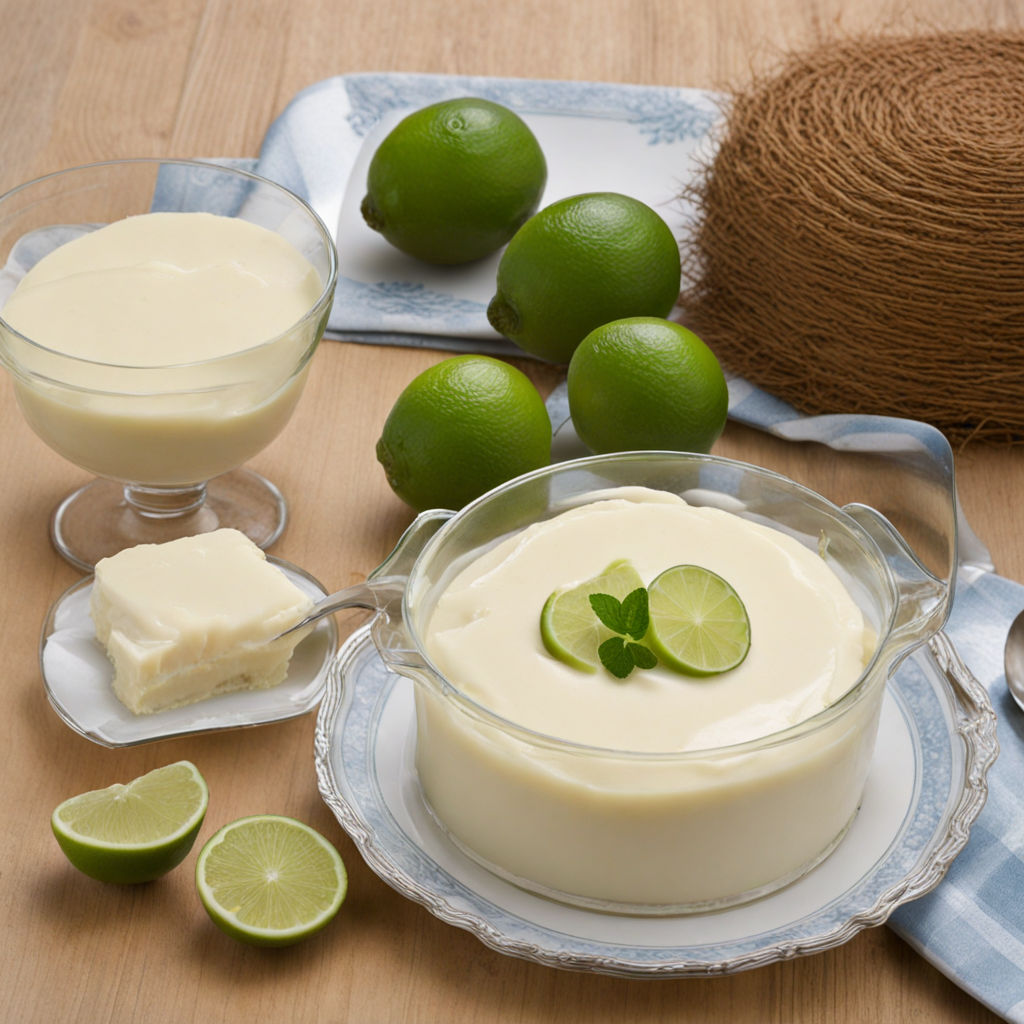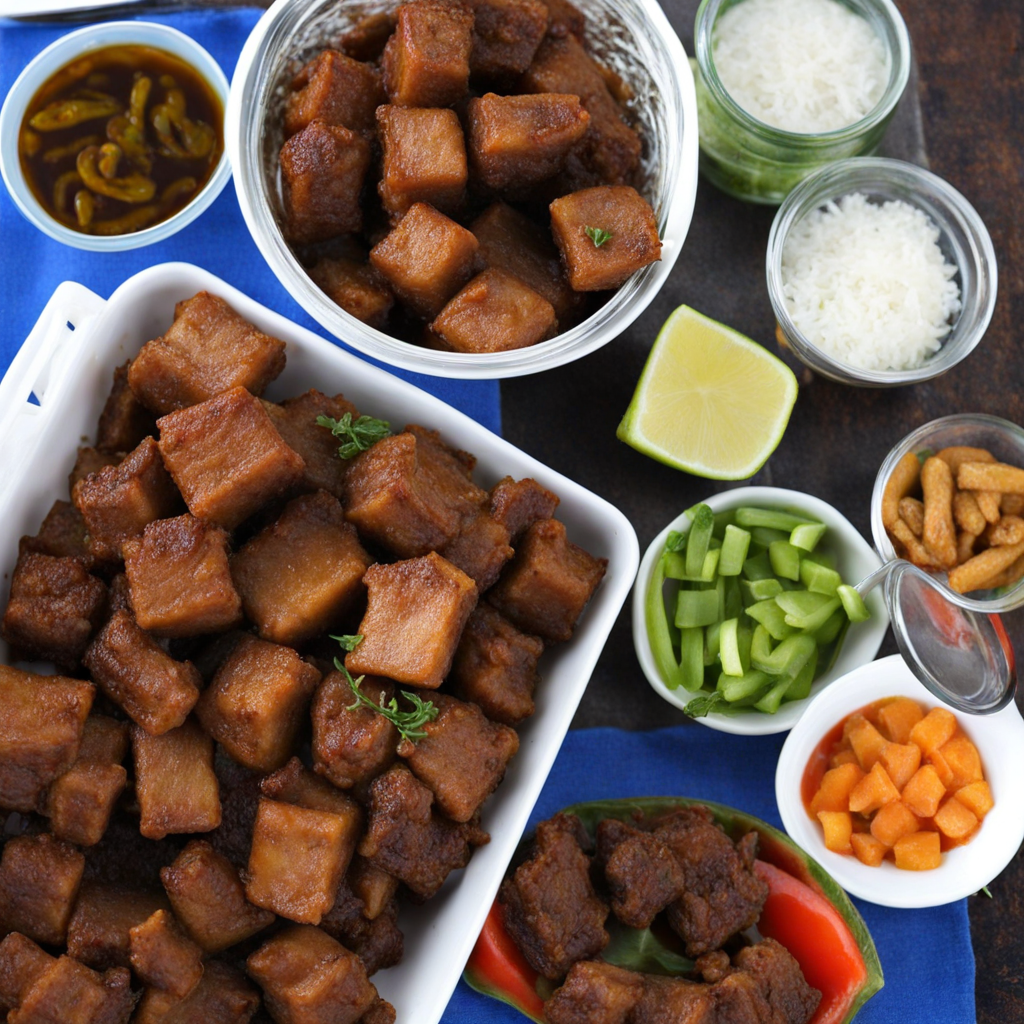Blancmange
Blancmange is a delightful Haitian dessert that embodies a unique blend of textures and flavors, making it a must-try for anyone seeking to explore new culinary experiences. This creamy treat is primarily made from coconut milk, which imparts a rich, tropical essence that is both refreshing and indulgent. The base is typically thickened with cornstarch, resulting in a smooth, gelatinous consistency that melts in your mouth. Often, vanilla is added to enhance its aromatic profile, creating a perfect balance between sweetness and warmth. Traditionally, Blancmange is beautifully presented, often garnished with a sprinkle of grated nutmeg or shredded coconut, which adds an enticing visual appeal as well as an additional layer of texture. In some variations, local fruits such as mango or pineapple may be incorporated, infusing the dish with vibrant bursts of flavor. The dessert can be served chilled, making it an ideal treat for warm weather or festive occasions, and it is frequently enjoyed alongside a cup of strong Haitian coffee, enhancing the overall sensory experience. This dessert not only boasts a captivating taste but also carries cultural significance in Haiti, often being prepared for celebrations and family gatherings. As you take your first bite of Blancmange, you'll find yourself transported to the colorful streets of Haiti, where the fusion of flavors and textures tells a story of tradition and joy. It’s a delightful way to experience a piece of Haitian culture while satisfying your sweet tooth.
How It Became This Dish
Blancmange: A Sweet Legacy from Haiti Origins of Blancmange The origins of blancmange can be traced back to medieval Europe, particularly in France, where it was initially a dish made from almond milk, rice, or chicken, thickened with gelatin or cornstarch. The name "blancmange" itself is derived from the Old French "blanc mangier," meaning "white dish." This dish was popular among the aristocracy, symbolizing wealth and refinement due to its delicate flavors and luxurious ingredients. However, the journey of blancmange took a significant turn when it reached the shores of Haiti, an island steeped in a rich tapestry of indigenous, African, and European influences. The arrival of the French colonizers in the 17th century introduced various culinary practices to the island, and it was here that blancmange evolved into a dish that reflected the local culture and ingredients. Cultural Significance in Haiti In Haiti, blancmange became more than just a dessert; it transformed into a symbol of celebration and communal identity. The dish is often made with coconut milk, sugar, and cornstarch or gelatin, resulting in a creamy, smooth texture that is both satisfying and refreshing. This adaptation highlights the island's abundant coconut resources and the influence of African culinary traditions, where the use of local ingredients was paramount. The preparation of blancmange in Haiti is often associated with significant cultural events, such as weddings, holidays, and family gatherings. It serves as a sweet finale to festive meals, bringing people together in celebration. The dish is commonly garnished with fruits like mango or pineapple, adding a burst of color and flavor that reflects the vibrant spirit of Haitian culture. Blancmange embodies a sense of nostalgia for many Haitians, often evoking memories of childhood and family celebrations. It represents the resilience of a culture that has endured through adversity, as well as the joy of coming together to share a meal. Development Over Time As Haiti navigated through its tumultuous history, including colonization, slavery, and the fight for independence, the culinary landscape evolved significantly. The dish that once symbolized French aristocracy was reinterpreted by the Haitian people, who infused it with their own identity and flavors. The adaptation of blancmange is a testament to the resilience of Haitian culture, as it absorbed influences from the indigenous Taíno people and enslaved Africans, creating a unique culinary expression. In the 19th century, following Haiti's independence in 1804, the nation began to embrace its cultural heritage, moving away from colonial influences. Traditional Haitian cooking flourished, and blancmange became a staple in the national cuisine. It was during this period that the dish was often prepared for special occasions, solidifying its status as a beloved dessert. As the years went by, variations of blancmange emerged, reflecting regional differences and personal preferences. In some areas, local spices such as cinnamon or vanilla were added, while others experimented with different sweeteners, such as honey or panela (unrefined cane sugar). The incorporation of local fruits as toppings became more prevalent, further enhancing the dish's appeal and allowing for seasonal adaptations. In the late 20th century, amidst globalization and the diaspora of Haitians around the world, blancmange began to gain recognition beyond its national borders. Haitian immigrants brought their culinary traditions with them, introducing dishes like blancmange to a broader audience. Restaurants and food festivals began showcasing Haitian cuisine, highlighting its rich flavors and cultural significance. Blancmange, in particular, became a symbol of Haitian hospitality, often served to guests as a gesture of warmth and generosity. Contemporary Interpretations Today, blancmange continues to hold a special place in Haitian culture, both in Haiti and within Haitian communities abroad. It is often prepared during religious celebrations, such as Easter and Christmas, where it serves as a reminder of the importance of family and community. The dish is also a popular choice for birthdays, graduations, and other milestones, reinforcing its role as a celebratory dessert. Modern interpretations of blancmange have emerged, as chefs experiment with flavors and presentations. Innovative recipes might incorporate tropical ingredients like passion fruit or guava, while some chefs infuse the dish with herbs such as basil or mint for a contemporary twist. The versatility of blancmange allows for creative expression, making it a dish that can adapt to various occasions and tastes. Additionally, the rise of interest in Haitian cuisine has prompted a resurgence in traditional cooking methods. Home cooks and professional chefs alike are rediscovering the importance of using fresh, local ingredients and honoring the culinary heritage of Haiti. Blancmange, in this context, serves as a bridge between the past and the present, connecting generations through shared recipes and memories. Conclusion Blancmange is more than just a dessert; it is a symbol of Haitian culture, history, and identity. Its evolution from a French aristocratic dish to a beloved Haitian staple reflects the resilience and creativity of a people who have transformed adversity into celebration. Today, as Haitians around the world continue to honor their culinary traditions, blancmange stands as a testament to the power of food in bringing people together and preserving cultural heritage. Whether enjoyed at a family gathering, a festive celebration, or a simple weekday meal, blancmange encapsulates the spirit of Haiti — vibrant, joyful, and deeply rooted in community. As it continues to evolve and inspire, this sweet legacy remains a cherished part of the Haitian culinary landscape, inviting all to savor its rich flavors and the stories that lie within.
You may like
Discover local flavors from Haiti







